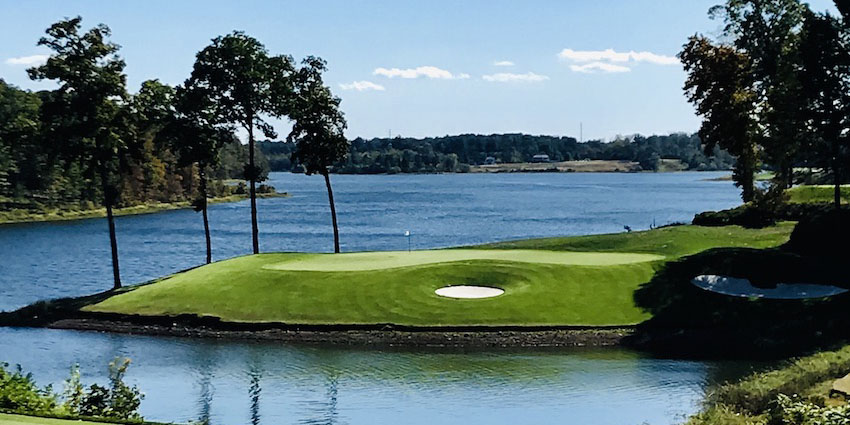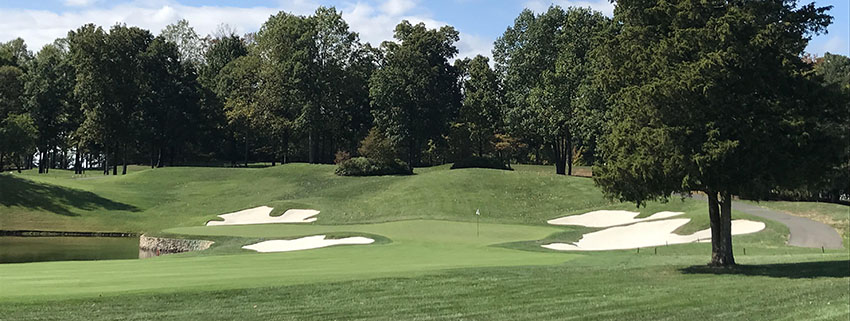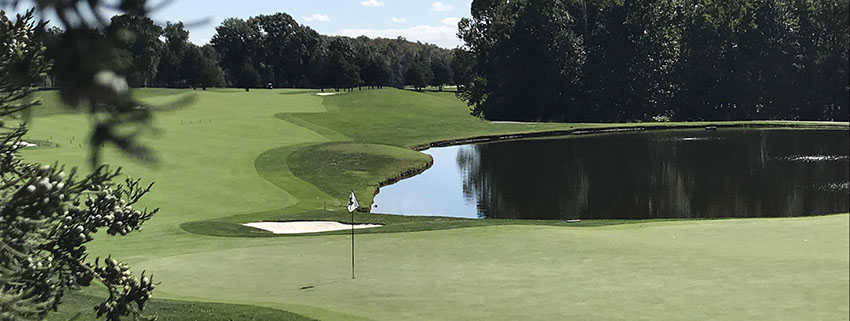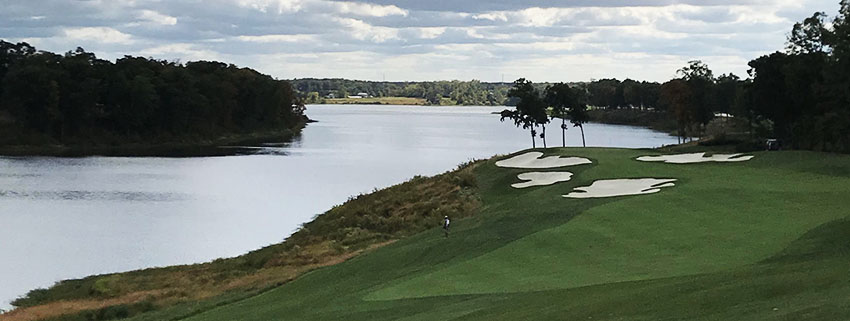
- AmateurGolf.com photo
It started with a tournament so oversubscribed that many teams get turned away. Not atypical for a top-ranked private club, where the annual member-guest (some say “invitational”) is the biggest event of the year – a showcase of the club’s conditions, layout, hospitality, and ability to put on a grand shindig. But if you’re the member on the outside looking in, or you just don’t appreciate all the fanfare (or extra long rounds) you might just skip the whole thing.
Or you could do what one of the members at Robert Trent Jones Club in Virginia did – without the endorsement of the tournament committee – start your own no-frills event. Let’s call him Pat Smith to protect his identity (Actually, his name really IS Pat Smith). A few years ago he (not so secretly) launched the Pat Smith Invitational, an anti-member guest.
I got the invite from my college frat brother Rick, who told me it would be a casual event, with a bit of light gambling involved.
I’ll tell you about the club in a minute, because it really exceeded my high expectations, as a signature club of the designer who is largely responsible for the modern long game, and advent of 7000-yard course. But before I do, I want to tell you about the unique format of the tournament.
We played a best-ball Stableford using a combination of gross and net point values. It was a bit much to wrap our arms around at first – and I think the reason we left with a yellow envelope full of Ben Franklins is that we never took the time to add the points in either round. Heck, on the first day we didn’t even pay attention on the first tee, as we scrambled to get there on time.
But by the end of the weekend it made total sense, and not just because we did well. The worst you could do on a hole was team bogey, for negative one point. Gross or net pars were worth a point, a net birdie worth two. But score a gross birdie and you got three. (A little kicker for taking a risk or sinking a long putt). The same thing for a net eagle vs. a gross eagle. The theory is, shouldn’t a birdie by a golfer who doesn’t get a stroke be worth a little more than a par by a golfer that does? I’m biased at 2.4, but I think so.
The format encouraged risk-taking, and a brisk pace-of-play. A good thing too. The first round of the tournament was the busiest in the almost 40-year history of the RTJ Club, with 171 players on the tee sheet. Even with a 12:50 tee time we still made it around in 4:45. It also ensured that the club’s most famous member (POTUS #44 Barack Obama) would be able to finish his late afternoon game -- behind our second round no less -- before sunset.
Now, I could give you a hole-by-hole analysis of RTJ, but I’ll try to find some drone footage to embed in this story to give you an idea of the sheer magnitude of the property, that spans hundreds of undisturbed acres. I knew it would be a “big” course, having hosted three President’s Cups in the late 90s and 2000. Lake Manassas is a calming presence -- not so much on the scary par-3 11th, see photo above -- and on the two days we played the high clouds formed shadows over it that gave it a surreal feeling, truly like playing golf in a painting. As gorgeous as the lake is as a backdrop, it's mostly a mental obstacle - there are no forced carry drives or horseshoe doglegs around its shores.

But the father of modern course design had plenty of other sorcery up his sleeve, don’t worry. On the holes with wide landing areas, strategically-placed fairway bunkers provide the hole’s defense. (I think Rees picked up a thing or two from his dad.) Finding at least one per round is unavoidable, especially for us mere mortals. But their reasonable depth and Tour sand provide a fair chance to recover and hit the green.
We played at about 6600 yards, so I only had to take the headcover off once or twice on par 4s. I can’t imagine going all the way back – I might not be writing this article if I did. RTJ is the kind of course that demands a golfer play from the proper tees for their handicap and distance off the tee. Scratch golfers are famous for their stubbornness in this area, and I was one of them. But when I play a course like RTJ I want to play a distance that puts my drive in the danger zones designed for pros, with the same feelings they may have despite being 70 yards longer.

Take, for example, the 18th hole, a gorgeous right-to-left bender that sets up perfectly for my draw off the tee. Like many of the undulating fairways at RTJ, there is a “speed slot” on the left third at the crest of a hill, guarded by two huge bunkers at the corner. The first day, I aimed down the middle and got the perfect kick down the hill. I was left with a pitching wedge from a flat lie at the bottom of the hill. In the final round I tried to sail one over the bunkers. After all, my ball wound up 50 yards by them the first day. Our playing partner Bobby – a senior club champ who is almost exactly the same age as me -- was silent. As we saw my ball in the bunker, having landed 10 feet short of carrying it, he said “we used to do it when we were young, but that’s a long carry now.”
The greens are enormous, and they can run as high as 14 on the stimpmeter. The greenside bunkering is amazing – the white sand providing a look somewhere between Torrey Pines South and Augusta National.
There are subtle rolls and ridges everywhere. Properly flighted approach shots are rewarded with “feeder” slopes that leave tap-in birdies from time to time. But play too safe away from a tucked pin, and you might wind up on the wrong side of a ridge with a 50-foot putt with 8 feet of break. I had that happen quite a few times, especially on the first day when I was learning the course. But in fairness to Jones, I never had a putt that I didn’t feel I had a chance to get down in two. Big greens are part of the modern game, and those at RTJ resulted in shots like Fred Couples’ approach into a tucked left pin on No. 17, hoisted in the air, landing softly on the right side of the green, and trickling down to tap-in distance, much to the partisan crowd’s delight.

And speaking of partisan crowds, I don’t care which side of the lever you vote on. Being in the presence of a former president is awe-inspiring. As I sat with the guys in the clubhouse, pondering playing some extra holes, I watched the security detail around the 18th green, and knew Barack Obama was about to finish up. I convinced the guys to play tourist with me and we pretended to be “hanging around” the clubhouse talking golf.
I wasn’t looking for a selfie. I didn’t even hope for a conversation. We just stood there beyond the secret service agents, along with a few other golfers and staff members. Our friend Taylor asked him if he wanted to go out again, and he said he might if the weather wasn’t so chilly, then he drove right up next to me and I couldn’t resist asking him if he was sure he didn’t want to play an “emergency nine." He flashed his broad smile. “Not to-day,” he told me in the staccato so often imitated on late night TV.
One of the outside service guys witnessed the exchange. “Don’t worry,” he told me. “I’ve been working here for three years and seeing him never gets old.”